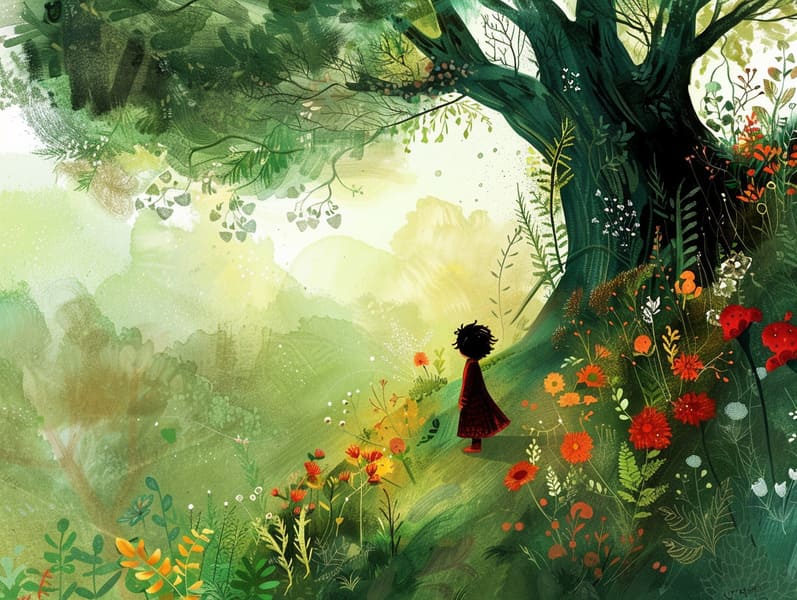Exploring the Roots of Fairy Tales for Kids with the Undying Attraction.
Exploring the Roots of Fairy Tales for Kids with the Undying Attraction.
Blog Article

Fairy tales have enduring presence. These stories have been whispered from one generation to the next well before they were ever written down. They developed from a variety of backgrounds, including European traditions. They were initially disseminated among older generations, often carrying themes and messages mirroring the societal norms and beliefs of the time.
The renowned Brothers Grimm, Jacob and Wilhelm, were among the first to compile many of these beloved tales. Their anthology, "Grimm's Fairy Stories," included classics like "Cinderella," "Little Brother and Little Sister," and "Snow White," which have since become essentials in the world of traditional fairy tales. Similarly, Hans Christian Andersen's fanciful fairy tales, such as "The Sea Maid," and "The Duckling's Story," have gained the love worldwide, securing their place in the pantheon of treasured fairy tales.
Even though they are old, these stories remain as important as ever, especially as kids' bedtime tales. These fantastical tales are now available in multiple formats, including richly illustrated books, charming animations, and digital storybooks.
Their lasting appeal can be traced to several enchanting factors:
Valuable Lessons: Old fairy tales often convey important moral lessons. Fairy tales like "The Shepherd Boy and the Wolf" teach the merit of being truthful, while "The Tale of the Tortoise and the Hare" show the traits of determination and modesty. These stories offer young ones clear distinctions between moral and immoral, forming their moral compass in a soft yet impactful way.
Empathy and Awareness: Fairy tales frequently feature heroines facing trials and tribulations, urging young readers to resonate with their struggles and root for their triumphs. For instance, "Beauty and Her Beast" highlights the importance of seeing inner beauty to understand the real person of a being, cultivating empathy and perception.
Cultural Recognition: Many fairy tales are saturated in the cultural contexts from which they were born. Exploring these tales can provide illuminating insights into different customs, enhancing a sense of cultural respect and acknowledgment.
Inventiveness and Imagination: The fanciful elements in ancient fairy tales—magical kingdoms—encourage children’s creative dreams. These narratives move readers to fantasy realms, provoking fantasy-filled thoughts and a sense of awe that endures a lifetime.
Classic fairy tales are not only whimsical but also informative. They provide entrancing tools in enhancing various mental and emotional abilities in young readers. When classic fairy tales are voiced, they improve language development by teaching new vocabulary and complicated sentence structures. This practice also develops auditory skills and attention, as children focus on every detail, enthusiastic to see what happens next.
Furthermore, discussing the themes and characters of classic fairy tales can promote thinking skills and reasoning skills. Kids are taught to spot patterns, expect results, and grasp cause and effect. These discussions also advance little ones verbalize their thoughts and feelings, adding to their emotional intelligence.
In today’s modern era, the accessibility of online storybooks has made these tales more available than ever. Internet sites and digital apps present large libraries of classic fairy tales that can be viewed or listened via anytime, anywhere. Fairy tales read aloud are particularly popular, extending an delightful method for young readers to enjoy these entrancing tales. Sound books and read-to-me stories carry characters and settings to life, often supported by magical audio effects and instrumentals that intensify the tale experience.
The timeless charm of traditional fairy tales lies in their ability to adjust to today's society while keeping hold of their central values. Contemporary renditions of these fairy tales often integrate more multicultural figures and modern settings, making them understandable to today’s audience. However, the fundamental themes of fortitude, generosity, and fairness remain unchanged, continuing to impact listeners of all ages.
Old fairy tales also offer a sense of solace and website familiarity. They grant access to a structured narrative with a unmistakable beginning, middle, and end, often wrapping up with the finalization of conflicts and the triumph of good over evil. This steadiness can be easing for young readers, sharing a sense of assuredness in an fluctuating world.
Timeless fairy tales continue to allure and train new generations, maintaining their delight and meaningfulness in modern society. As nighttime stories for kids, they allow a perfect blend of fascination and comprehension, facilitating moral values, empathy, and creativity. The abundance of digital storybooks and the prevalence of fairy tales told out loud ratify that these traditional narratives remain reachable to new generations.
By upholding and telling these tales, we continue to treasure the rich tapestry of creativity and cultural heritage. Whether you are accessing a vibrantly illustrated book, delving into a virtual collection, or listening on an audiobook, the grandeur of timeless fairy tales is always within reach. These narratives highlight of the unending force of stories and its ability to unify us across time and space.
Be it you are enjoying a beautifully illustrated book, experiencing a cyber collection, or listening on an audiobook, the grace of famous fairy tales is always within reach.
These fairy tales emphasize of the timeless influence of storytelling and its ability to link us across generations and cultures, making a tie that fascinates and enlightens alike.